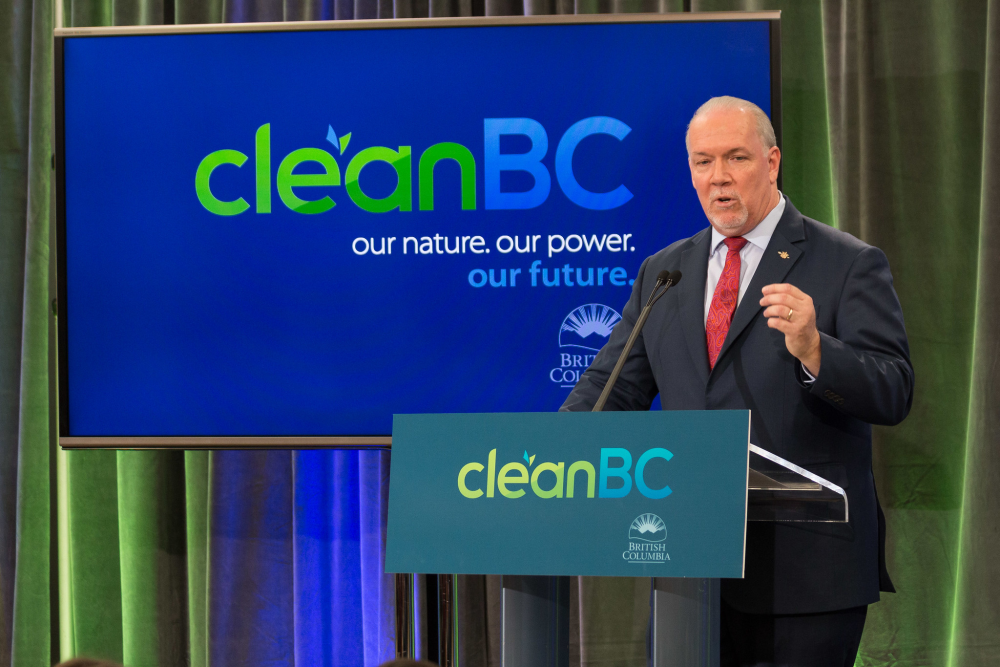VANCOUVER / MUSQUEAM, SQUAMISH & TSLEIL-WAUTUTH TERRITORIES — Karen Tam Wu, regional director, B.C. at the Pembina Institute, made the following statement in response to the release of B.C.’s 2017 greenhouse gas emissions numbers:
“The emissions inventory tracks B.C.’s carbon pollution until the end of 2017, a time when the province was stalling on climate action. The resulting emissions growth proves it’s essential that the government fully implements B.C.’s climate strategy, CleanBC. Now we have to make up for lost time. We simply can’t afford to repeatedly miss carbon reduction targets.
“To avoid this, the government must strengthen accountability legislation. A robust system should include an independent advisory body, sector-specific carbon reduction targets, transparent reporting on progress and the ability to make timely adjustments as needed.
“The increase in emissions from new commercial and residential buildings, which will remain standing for years to come, highlights the need to move to low-carbon heating sources for buildings and to build to higher energy efficiency standards as soon as possible.
“While emissions from the oil and gas sector were slightly reduced, this sector is still B.C.’s largest single source of greenhouse gas emissions. With LNG development, emissions in the sector are expected to grow, and will undermine B.C.’s ability to meet its carbon reduction commitments. We continue to wait for details of how new LNG development will fit within B.C.’s climate commitments.”
Quick Facts
- B.C.’s 2017 provincial emissions inventory shows emissions have increased 1.7 per cent since 2016. This is a continuation of the trend we saw in last year’s inventory, with a 1.5 per cent increase in emissions from 2015-2016, and demonstrates that B.C. is not currently on track to meet its climate targets.
- B.C’s 2030 emissions target is 38.9 million tonnes, and 2050 target is 13 million tonnes.
- To meet targets, the province needs to reduce emissions by 25.6 million tonnes by 2030. This is an average reduction of more than 3.5 per cent per year.
- Highlights from key sectors:
- Between 2016 and 2017, emissions increased by 7.3 per cent (0.47 million tonnes) in the buildings sector, increased by 2.4 per cent (0.61 million tonnes) in the transportation sector, and decreased by 0.8 per cent (0.17 million tonnes) in industry.
- The industrial sector was responsible for 35 per cent (22.4 million tonnes) of B.C.’s carbon pollution in 2017, and the oil and gas sector was responsible for 17 per cent (10.8 million tonnes).
Contact
Kelly O’Connor
Associate communications director
416-220-8804
Background
Backgrounder: A Clean Energy Plan for B.C.
Backgrounder: Limiting Methane Pollution from B.C.’s Gas Sector
Backgrounder: Liquefied Natural Gas, Carbon Pollution, and British Columbia in 2017
Open Letter: A Climate Accountability Framework for B.C.
Op-ed: Is B.C.’s Energy Step Code a Blueprint for Canada?
About the Pembina Institute
The Pembina Institute is a non-profit think-tank that advocates for strong, effective policies to support Canada’s clean energy transition. We have offices in Vancouver, Calgary, Edmonton, Ottawa and Toronto. Learn more: www.pembina.org




